No products in the basket.
13th May 2020
The Tale of the Asylum Railings
If there’s a recurring question from customers – agog at the glorious salvage crammed into the LASSCO shops and yards in Oxfordshire and London – it is “Where do you get all this stuff from?”. Another is “Who is going to buy that?”.
The answer to the first is: “Take a seat – this is going to take all day”. The answer to the second is “I’ve got no idea”. But with the benefit of hindsight, for our more intriguing individual acquisitions, we can answer both questions and tell you the whole story – and here’s one from Anthony Reeve at LASSCO Three Pigeons. It is rather heart-warming.
The Asylum Railings
In 2013 we were called in to the Shropshire warehouse of an organisation that had stockpiled enormous quantities of Architectural Salvage – not just for the saving of it – but with the intention of re-using it when possible within its considerable portfolio of historic buildings. Commendable yes, but the storing of this stuff for decades isn’t cheap or easy and they had decided to reduce the scale of what they had retained. We were of course happy to help them with their clear-out and, by the time we’d done a deal, our acquisitions filled two articulated trucks.
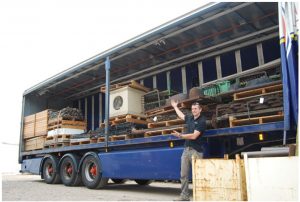
Within that consignment were mountains of cast iron railings, and stacked among them were the dis-assembled gateposts and railings that used to front the “Asylum for Deaf and Dumb Children” on The Old Kent Road. Forming a generous curve they once encompassed a beautiful garden and horseshoe drive accessed by grand gateways topped with lanterns – a London landmark. They were over 200 years old.
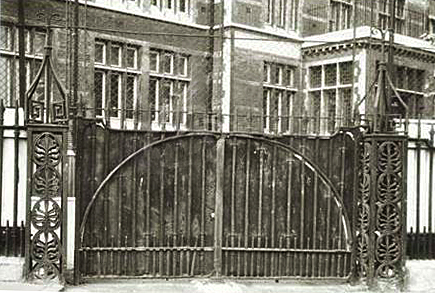
You may have read the story behind the discovery of this grand ironwork with its distinctive and very beautiful panels of “anthemia” (honey-suckle motifs) as – having done some research – we published it here in these pages, and catalogued the various components for sale on our website.
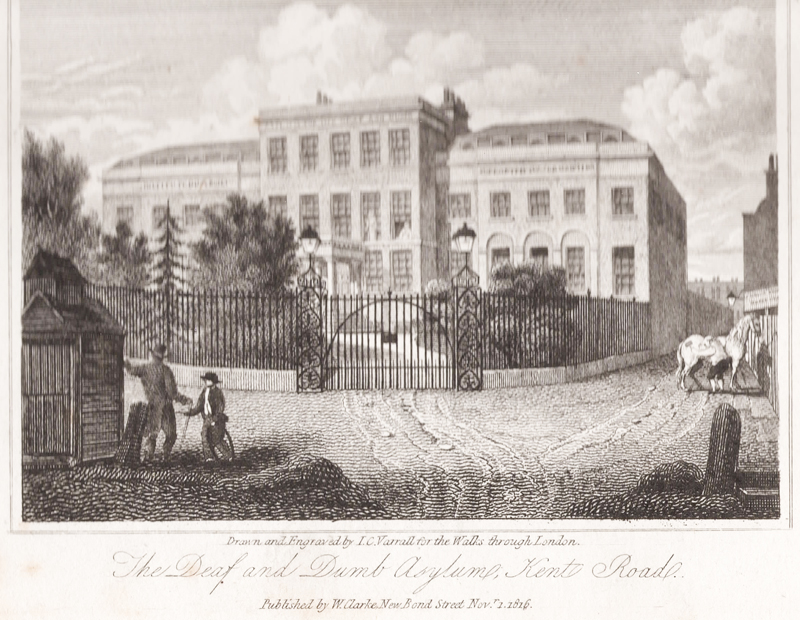
We had told the story of how the Georgian railing, against all odds, had endured. It had survived the Victorian transformation of Bermondsey from a Dover-bound avenue with grand villas amongst market-gardens to one of the most densely populated slums in Europe. It had survived the demolition of the grand old Asylum building in 1885, and the building of a red-brick school in its place, while the institution itself eventually decamped to Margate to become the Royal School for Deaf Children. The ironwork survived this – the arrival of the railways and then numerous road-widening schemes, and later, the Zeppelin raids of the First World War. Come the Second World War, situated at the epicentre of “bomb-alley”, it survived the V2 rockets that peppered Bermondsey – short of their City and Westminster targets. It even survived the wholesale removal of London railings for the War Effort: a mis-informed and needless act of vandalism (the removed park railings – mostly being cast-iron – were hardly used). In 1955 the railing was recorded in the Survey of London,
“The original boundary railings still remain with honeysuckle ornament to the gate standards”…
and it all even went on to survive the ravages of the Modernist town-planners that saw to the demolition of much of the surrounding Victorian back-to-backs and the building of the numerous tower-block estates that replaced them.
Finally, after 161 years, it was the building of the Bricklayer’s Arms Flyover, in 1970, that saw the railings’ removal. But even then, remarkably, they were salvaged and not destroyed.
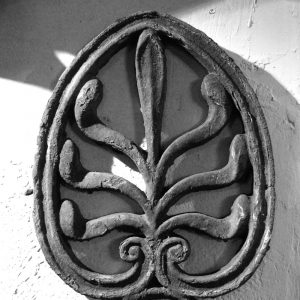
And this story found its way in time, via his rummagings on the internet, to the attention of Peter R. Brown.
Peter, a writer and historian, now living in Sussex, knew the history of the Asylum and knew about the lost railing; he even had the original prints of the Georgian Asylum building hanging in his study showing it all in situ.
“I came across this railing on your website through a Google search. I decided to go to see them for myself and was a delighted when LASSCO generously offered the railings at a bargain price – so I purchased them all for the British Deaf community.”
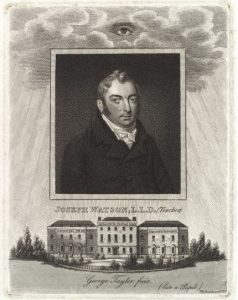
Peter is himself an alumnus of the Royal School for Deaf Children Margate – the school whose origins were the Asylum. As an historian of sign language, he knows the profound importance of the place: it was the hub for the development of sign language in its very earliest days and a trail-blazing centre for philanthropic care for the poor and disadvantaged in Georgian London. He explains:
“The London Asylum was Britain’s first public school for the deaf. It was run by Dr Joseph Watson, a Scot, who was head teacher from 1792, when it first opened, till his death in 1829. Watson recognised and utilised the natural sign language as the main instrument in teaching the English language, this included writing, fingerspelling, speech and lipreading, depending on the deaf child’s nature or degree of hearing loss. In 1809, deaf children moved to the new school premises in the (Old) Kent Road where it remained until 1905 when the school moved to Margate, Kent – located near to the sea to ensure the health of the deaf children.
Despite the banning of sign language in 1880, the Royal School for Deaf Children Margate (RSDCM), along with a few other large deaf schools, were ‘allowed’ to use sign. Sign is British Sign Language (BSL), a natural sign language of the deaf (it has a different grammar from English, a similar structure to Latin) was used in the playground or dormitory to gossip, and the ‘Combined Method’, with a few signs to support speech/lipread, in the classroom. And the RSDCM is where I, born severely/profoundly deaf, was a pupil from 1967 till 1979. It is believed that some of the signs which I learnt at the school had been passed down from children at the London Asylum.
The school in Margate closed in 2015. It delivered a deep and terrible shock to the British Deaf community because this historic school was responsible for creating the rich language, the BSL we are all proud to use today. It was my research into the history of the London Asylum that helped me to evolve from being half illiterate to literate – through the power of Watson’s 1809 philosophy on sign language.”
When Peter arrived at LASSCO Three Pigeons my regrettable and complete lack of sign language skills, which would have enabled a more fluent chat with him, was no barrier to the two of us rounding-up the metal-work in the yard and arriving at a deal. We feverishly tore through piles of paper scrawling through our conversation with biros, embellished with mime, in an enthusiastic exchange. It was great to find someone who knew the significance of the ironwork. He was equally astounded that, fifty years after its removal, it had re-surfaced in Oxfordshire – via Shropshire.

On delivering it all to Sussex (the sheer weight of it – approximately 3 tons – determined that it had to go in two loads), there was a feeling that LASSCO’s stewardship of it was some sort of destiny; we had merely been enabling it to find its rightful owner. We heaved the prize pieces of metal work – the anthemia gate-post panels and lantern chair-irons that once topped them – into Peter’s study to frame his desk. Others were propped in his hall – the iron castings still bearing the old paint and grime of 160 years of life on The Old Kent Road. Out in the garden a timber rack for the railing spears had been made in advance. The spears were meticulously stacked. It was quite a work-out.
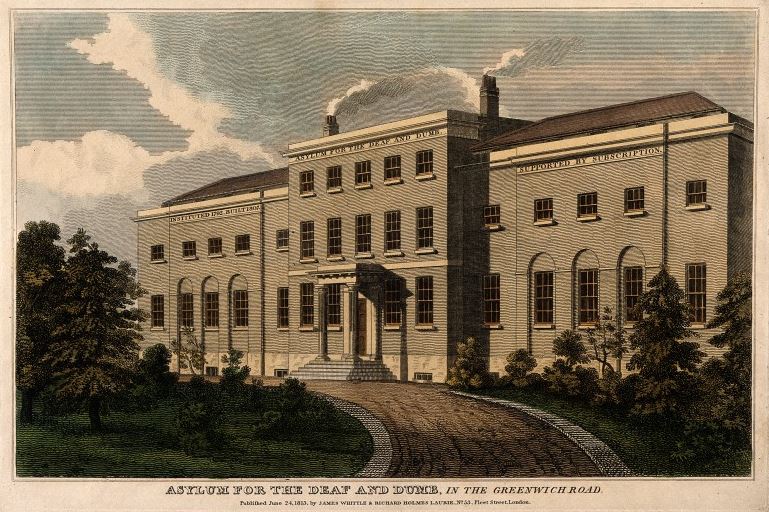
Over a cup of tea Peter outlined his intentions. He also pointed out the poignancy of the provenanced ironwork – what it meant to him and to the wider Deaf Community,
“The London Asylum railings are the holy grail and are a powerful symbol of the history of BSL and the British Deaf community. I am going to donate them to some of the deaf organisations including the British Deaf History Society to keep the spirit of BSL and the Deaf community alive. I have [already] sold some of them to some BSL teachers who wanted to display them and stimulate their students learning BSL in the classroom.”
And I was delighted to be shown Peter’s own collection of historic finds. An inveterate Thames Mudlark and Collector his house is crammed with museum cases and cabinets – displaying an endless array of neatly labelled pottery shards, clay-pipes, prehistoric worked flints, tiles and curiosities. I could have stayed and chatted all day – but we were running out of paper.
A few days later Peter emailed. He’d found a mention of the then proposed removal of the Asylum railings in documents dated to 1968, by a Winifred Wilkinson, one of the teachers of the deaf children, her words were prophetic indeed:
“Maybe some John Betjeman of the deaf world will arrive on the scene in time to preserve such the memorial to the permanence of our solicitude for the deaf,…”
It took 52 years, but in Peter R. Brown, LASSCO found the very man.
Anthony Reeve
LASSCO Three Pigeons
My thanks to Peter R. Brown for his help with this article.
For anyone researching the history of the Asylum for Deaf & Dumb Children in Bermondsey, or its successor, The Royal School for Deaf Children Margate (RSDCM):
All manuscripts relating to the history of the school are now stored at the Kent History & Library Centre at Maidstone in Kent, whilst the printed books are kept at the Action on Hearing Loss Library in London. All other materials such as pictures have been donated to the British Deaf History Society (BDHS) in Warrington, Cheshire.
